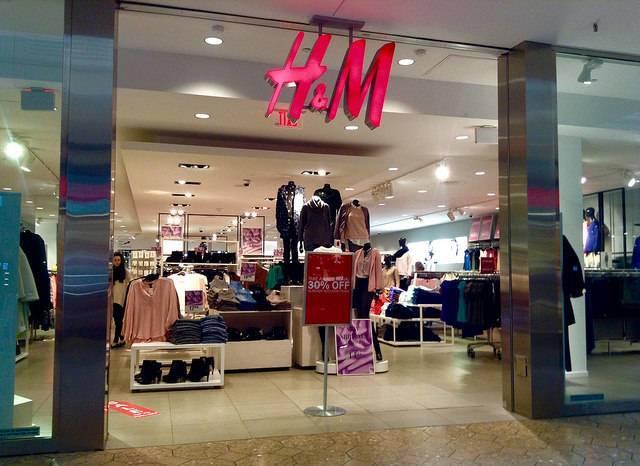
We all agree that climate change adaptation and mitigation are necessities for any company with manufacturing and logistics considerations. First, these industries are carbon intensive, and second, their normal business operations stand to be impacted by climate change. And it makes good business sense to be prepared.
H&M's commitment to "climate positivity" takes it one step further. The apparel company pledged to not only take responsibility for its own carbon footprint, but to take the advanced step of leaving the planet, carbon-wise, better than it found it.
Getting to carbon neutral should be fairly straightforward -- renewable energy and energy efficiency account for 96 percent of H&M's operations. But capturing that last little bit of impact, and tackling impact up and down the supply chain, requires a new perspective and a commitment to investing in carbon sinks inside and outside the company.
But how to choose where to invest? During the recent Change Makers event in Stockholm, convened by H&M, Johan Kuylenstierna from the Stockholm Environment Institute challenged the apparel company to "be bold" and think beyond traditional carbon offsets to inspire its whole sector.
Traditional best practices compel a company to offset its carbon footprint with projects that support restoration in areas where it has a negative impact. For example, a beverage company should invest in restoring waterways. But it isn't always so simple or straightforward.
The most material option might also be the most expensive, or technically unfeasible. So companies should choose its own mix of restorations and offsets to hopefully maximize impact.
In the case of H&M, the company's impact is largely in the production of fabric -- turning cotton and polyester filaments into thread and sheets of fabric. These manufacturing processes require a lot of energy and therefore carbon. But since they take place in factories, choosing a materially relevant restoration path isn't straightforward.
During the event, WWF's Paul Chatterton urged H&M to pursue landscape restoration for its climate positivity commitment.
"Landscapes are a great way to package many problems and solutions efficiently," he explained. While "landscape restoration" evokes images of my dad mowing the lawn, it's a lot more complex. It takes reforestation and tree-planting programs, commonly cited carbon sinks, much further.
The problem with tree-planting programs is in the execution. The ecological value of a forest is more than the sum of its trees. Forests are habitats for bugs and birds, larger animals, and foliage of all kinds. And the ecosystem works as a whole to filter air and water. When a forest is clearcut for lumber, these ecosystem services disappear along with it. A reforestation project that plants hundreds of rows of seedlings is merely a tree farm. The ecosystem services won't magically return without extra support.
Landscape restoration brings the concept of tree-replanting to its logical completion, restoring ecosystem services along with providing the carbon sinks or trees and soil. Ecosystem services are a whole host of benefits natural habitats offer including clean air, clean water and natural habitats for animals.
WWF discovers, develops, structures and funds landscape restoration using a mix of funding sources including corporate funding from organizations like H&M, public funds and grants.
For example, a current project in Virunga National Park - a UNESCO World Heritage Centre is a natural habitat for hippos, mountain gorillas and thousands of other species thanks to the range of microhabitats in the region: steppes, savannas and plains, marshlands, mountains and volcanos. The park is at risk from poachers and illegal deforestation. The WWF program invests in restoration and sustainable commerce programs that allow locals to earn revenue from this treasure without destroying it.
A project currently under development in Cambodia could restore tigers to their former hunting grounds if WWF can find the right partners.
While landscape restoration projects do cost more than some other simpler carbon offsetting programs, their benefits are self-perpetuating -- which means we can permanently restore ecosystem losses and a one time investment can provide benefits for years to come. H&M could invest in programs in countries where its garments are manufactured or have been in the past, giving back to the families of the garment workers in its value chain.
Another great option for H&M, proposed by Johan Kuylenstierna, is soil restoration. Large scale agriculture has the same negative impact on ecosystems as clearcutting -- it not only removes the services a natural ecosystem provides, but it also removes the ecosystem's ability to self-correct and recover.
Soil degradation is a threat to 40 percent of the world's dry land, Kuylenstierna said. "Industrial agriculture sits behind much of what we are wearing today. So H&M should invest 40 percent of profits in recovery," he quipped.
When soil is healthy, fewer chemical fertilizers are needed and the soil serves as a natural carbon sink. Investing in healthy soil would provide many of the same long-term sustaining benefits as landscape restoration while also offering the materiality benefit of restoring a system its operations degraded.
If H&M truly turns itself "climate positive" through a rigorous program like that developed by WWF, the retailer will be a global leader and could inspire retailers throughout its industry, leading us to truly feel positively about climate change!
Image credits: 1) Flickr/Mike Mozart; 2) and 3) Paul Chatterton, WWF
H&M provided travel funding, opinions are my own.
Jen Boynton is the former Editor-in-Chief of TriplePundit. She has an MBA in Sustainable Management from the Presidio Graduate School and has helped organizations including SAP, PwC and Fair Trade USA with their sustainability communications messaging. She is based in San Diego, California. When she's not at work, she volunteers as a CASA (court appointed special advocate) for children in the foster care system. She enjoys losing fights with toddlers and eating toast scraps. She lives with her family in sunny San Diego.














